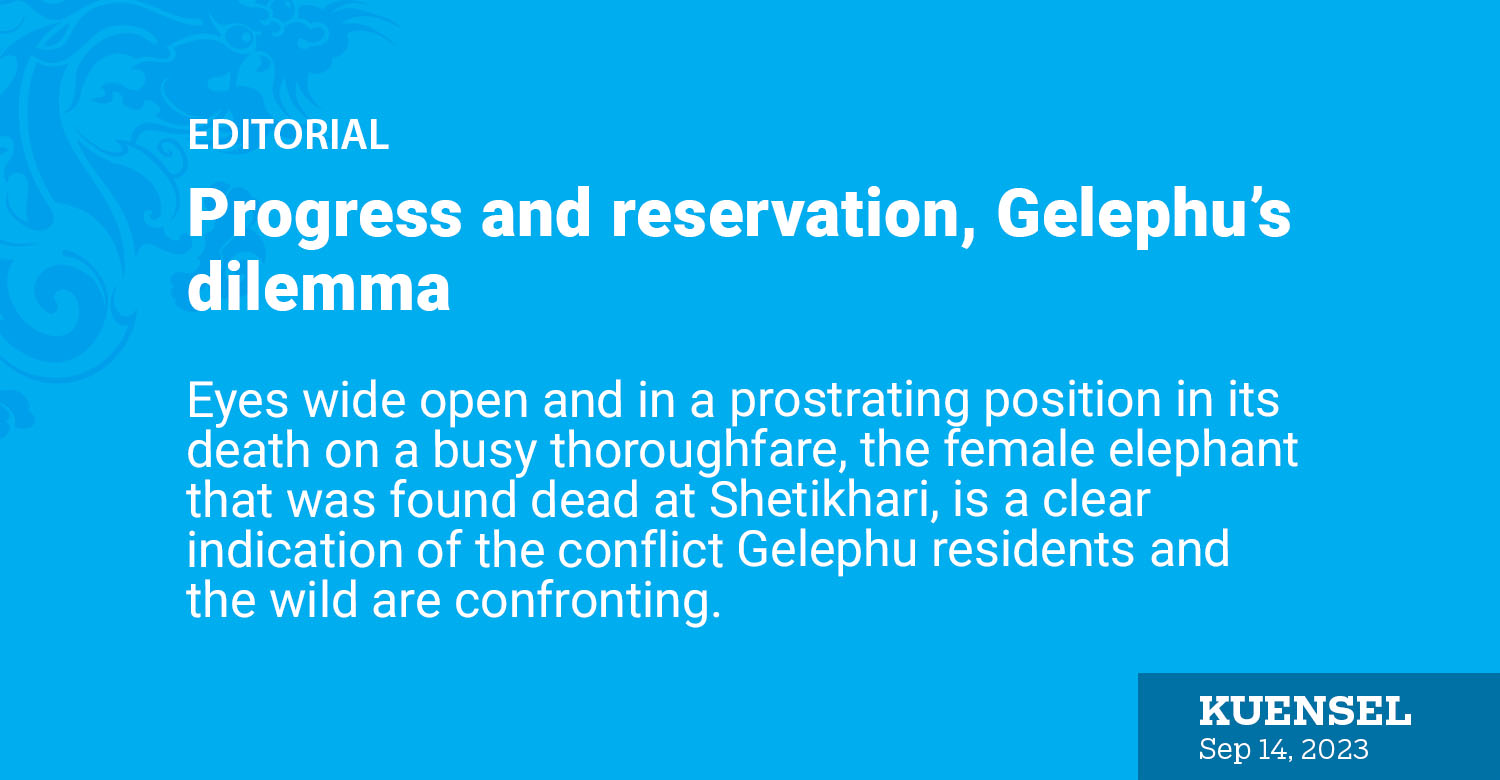Eyes wide open and in a prostrating position in its death on a busy thoroughfare, the female elephant that was found dead at Shetikhari, is a clear indication of the conflict Gelephu residents and the wild are confronting.
Gelephu, not long ago was known as Hatisar or the land of elephants, echoing the region’s rich biodiversity and the harmonious coexistence of humans and wildlife for generations. However, today, this serene coexistence is marred by a growing conflict, one that could threaten both its plans for development and its precious wildlife.
At the heart of this dilemma, at least today, lies a severe human-wildlife conflict, with elephants damaging crops and properties, raising concerns about how to preserve the wild without compromising the proposed special economic zone.
The recent death of an elephant has brought this issue into the spotlight, underscoring the urgency of finding a solution that ensures the survival of Gelephu’s natural heritage while fostering economic growth.
To strike this delicate balance, several considerations must be taken into account. We have time to our advantage. It is crucial to implement measures to mitigate these issues. There are dedicated response teams, the use of innovative technologies such as early warning systems, and the development of elephant-proof fencing are essential steps to protect both human and elephant populations.
However, long-term strategies must be devised to address the root causes of this conflict. We could explore the possibility of creating buffer zones around wildlife habitats to minimise human encroachment. Additionally, fostering community-based initiatives that encourage responsible wildlife management, while ensuring the equitable sharing of benefits from conservation efforts, can help mitigate the conflict and build local support for conservation.
In other words, with proper plans, we could turn the problem into opportunities. With the right interventions and policies, tourists or investors watching elephants in the wild, from their conference halls, could add to the uniqueness we are known for.
Like many believe, the dead elephant in a prostrating position and on a busy thoroughfare, perhaps is a plea from the wild to draw attention to their existence. Gelephu’s vision of becoming a special economic zone cannot be ignored. It is a planned project that many of us couldn’t even comprehend. It is crucial to find ways to harmonize this development with wildlife conservation goals.
One approach could be incorporating wildlife conservation into the development plan. For instance, establishing wildlife corridors and ensuring that industrial activities do not disrupt these critical pathways can help elephants and other wildlife navigate the landscape safely.
Another way of turning the problem into opportunity is eco-tourism. Gelephu can capitalise on its status as the “land of elephants” by developing responsible and ethical tourism practices that allow visitors to appreciate wildlife in its natural habitat while generating income for conservation efforts.
Meanwhile, collaboration and consultation with wildlife experts, conservationists, and local communities are essential throughout this process. Engaging all stakeholders will help generate creative solutions that respect both the aspirations for development and the imperative to protect Gelephu’s wildlife.
Gelephu stands at a crossroad, where the pursuit of development and the preservation of its natural heritage intersect. To resolve the human-wildlife conflict and pave the way for a prosperous future, Gelephu must prioritise both conservation and development.
This requires immediate action to mitigate conflicts and long-term planning that integrates sustainability and wildlife protection into the special economic zone’s blueprint. Only by embracing this holistic approach can Gelephu truly become an example of balanced progress and preservation.


